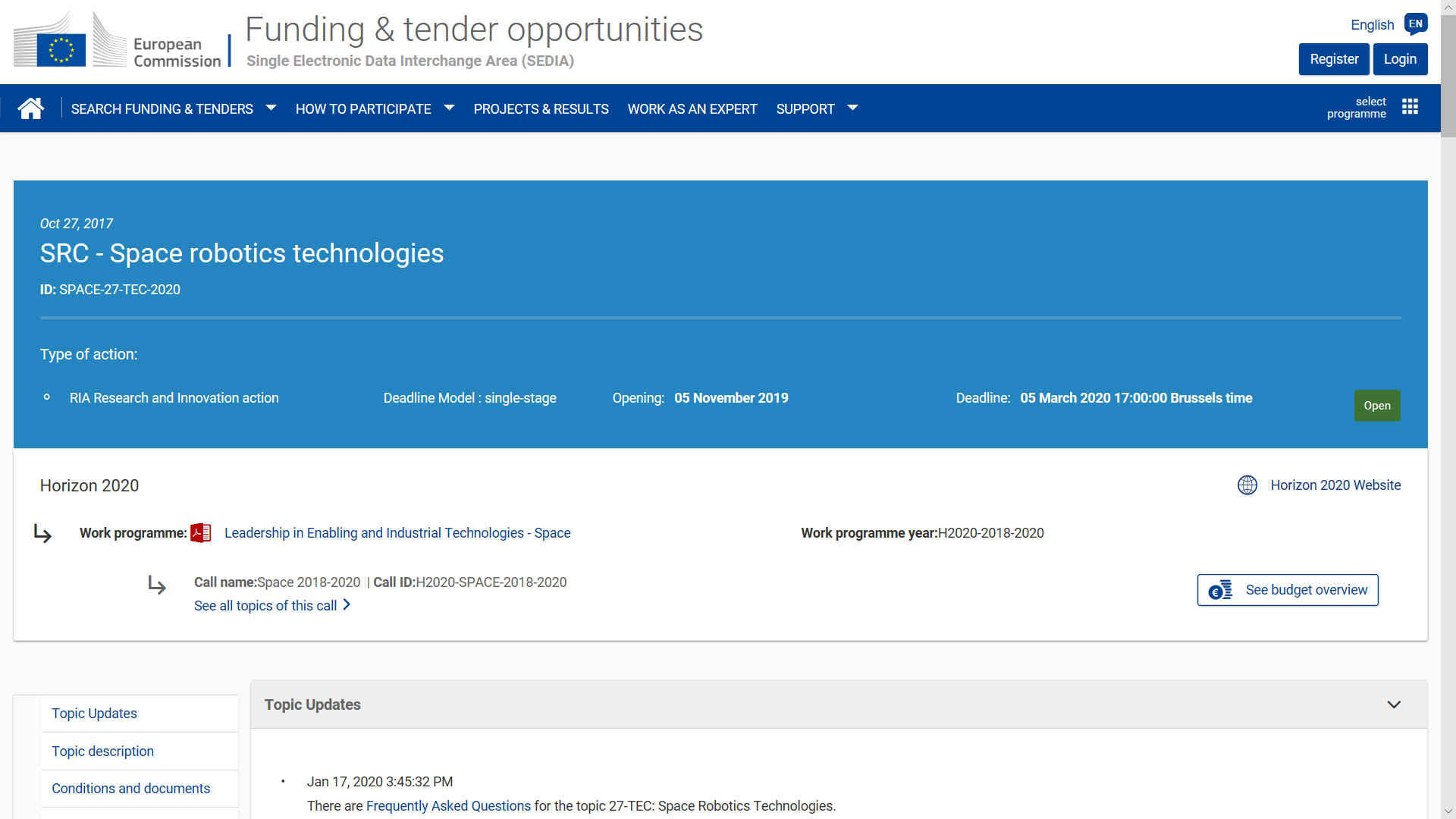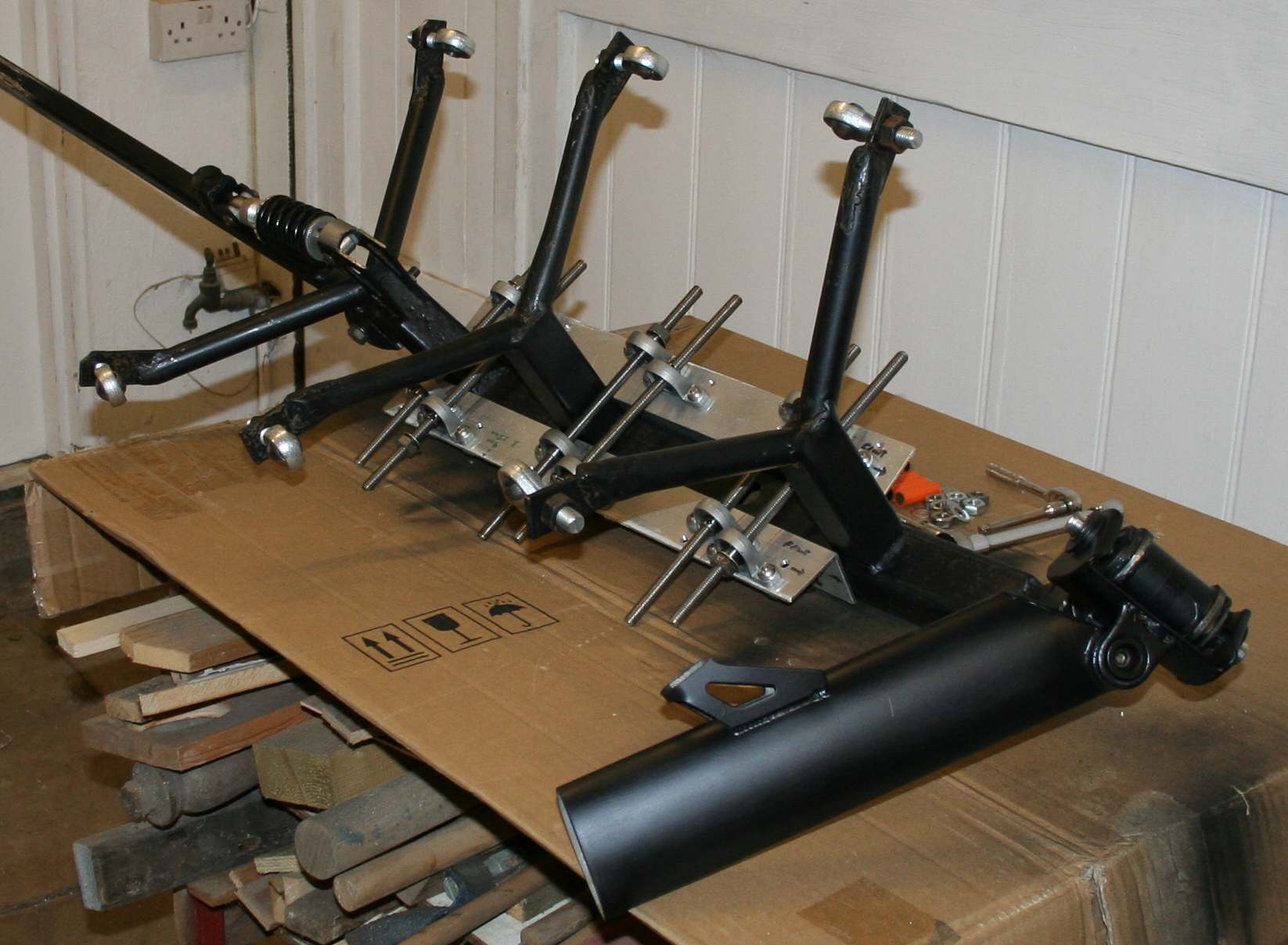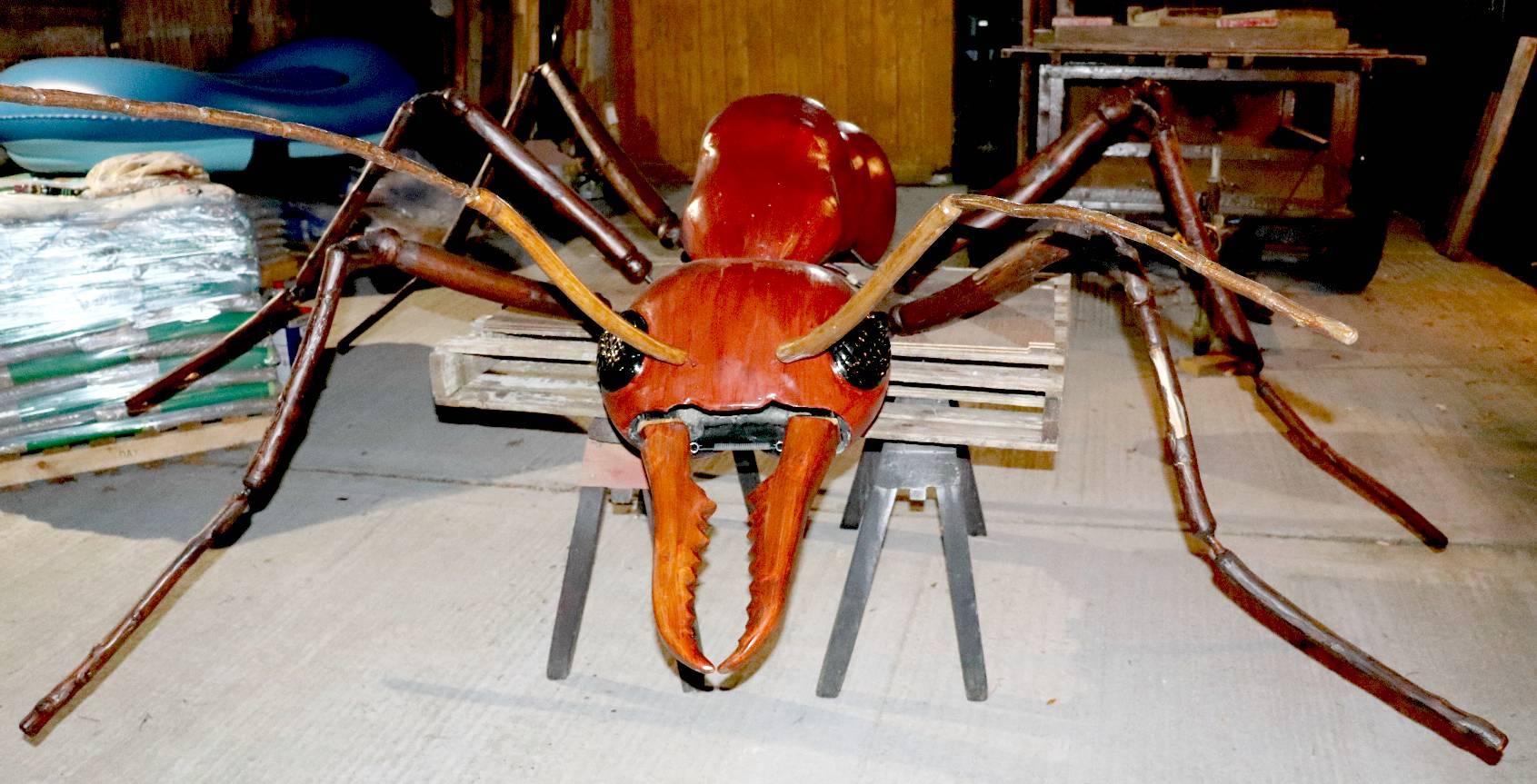|
PLANETARY SPACE EXPLORATION - LOCOMOTION
|
|
|
H2020 SRC - Space exploration funding from the European Commission is via calls for proposals and tender opportunities such as that above.
Space exploration is fraught with obstacles, not least of which is locomotion over uneven terrain. Moon, Lunar, or Mars Rovers have been trundling over the surfaces of planets using wheels and tracks with a degree of success. The limitations are when encountering obstacles such as craters and gullies that they cannot negotiate due to traction difficulties.
Humans are reasonably adept at overcoming difficult to climb obstacles such as cliffs and trees, but nowhere near as agile as cats, monkeys, squirrels, insects or spiders.
For a Space Rover to be effective in craters and canyons wheels might not provide the ideal level of traction over rocks and up steep inclines. Whereas, a stable legged vehicle with suitable ground clearance and versatile feet, might scramble up slopes and even traverse cliff faces - greatly increasing the possibilities when exploring a planet's surface.
PROTOTYPE - This was the 1st tubular frame made of recycled steel, where previous chassis had been unitary construction. This design has since been improved on, to be mocked up and tested in steel before making a final version in titanium and/or composites.
SPACE RESEARCH CLUSTER (SRC) SPACE-27-TEC-2020 - EUROPEAN COMMISSION
The overall challenge of this Strategic Research Cluster (SRC) is to enable major advances in space robotic technologies for future on-orbit missions requiring robotic activity and proximity rendezvous, and the exploration of the surfaces of the other bodies in our solar system.
The objective of this third call is to prepare the technologies for demonstrators planned to be implemented in the 2023-2027 timeframe. The successful proposals shall validate relevant applications for both orbital and planetary scenarios relying on technologies derived from previous SRC activities.
This sub-topic aims to integrate the state-of-the-art technology (artificial intelligence, sensing and modelling complex environments, diverse means of locomotion, and cooperative planning and decision making) needed for this application.
The successful proposal should aim to overcome these current constraints by identifying the gaps in technology and knowledge and providing innovative solutions.
In detail, the successful proposal should address the following aspects:
Demonstrator: the design and implementation of an exploration demonstrator to simulate hazardous and/or difficult extra-terrestrial terrain and test the technologies required to plan, navigate, traverse and investigate them.
Technology development: Identification and development/maturation of the critical software and/or hardware technologies needed to enable the exploration of previously inaccessible areas on planetary surfaces. The spin-in of technologies from terrestrial sectors shall be investigated for this purpose.
Case Study exploring terrestrial exploitation: provision a full case study demonstrating how the submitted technology can be exploited on Earth to solve problems in terrestrial sectors and scenarios.
Re-use and improvement of the technologies and products of the previous SRC Calls: inclusion of a dedicated section explaining how to implement and develop the results of the previous SRC Calls, both in terms of building blocks and of system design.
The results of the successful project, coupled with the results of the previous SRC calls, will be crucial in paving the way for future European activities in planetary exploration.
Grants awarded under this topic will be complementary to each other and complementary to grants awarded under other previous SRC topics COMPET-4-2014, COMPET-4-2016 and SPACE-12-TEC-2018. In order to ensure a smooth and successful implementation of this Strategic Research Cluster, the beneficiaries of complementary grants ("complementary beneficiaries") shall join the already established "collaboration agreement". The respective options of Article 2, Article 31.6 and Article 41.4 2 of the Model Grant Agreement will be applied.
Proposals under this topic may be subject to security scrutiny if they could potentially lead to security-sensitive results that should be classified (see guide for classification available at the Funding & Tenders Portal).
Propose multiple new business cases and enable new market opportunities reflected by the paradigm shift from mission-specific solutions to modular, intelligent, flexible spacecraft;
SPACE RESEARCH FUNDING
EU space research aims to foster a cost-effective, competitive, and innovate space industry and research community. This helps ensure that space technology meets EU policies and provides cutting-edge solutions to everyday societal problems that benefit EU citizens. It also ensures that Europe remains competitive in space.
EU space research is supported through framework programmes. Horizon 2020 is the current framework programme covering the period from 2014 to 2020. It was preceded by FP7 which ran from 2007 to 2013, and FP6 which ran from 2002 to 2006. The support of these programmes is critical to the ongoing development of the space sector. In particular:
* It encourages the research community and the private sector to intensify their efforts in the space sector and boost investment;
* It helps to sustain a competitive space industry including manufacturers, service providers, and operators;
* It provides the services and infrastructure necessary for the development and exploitation of new technologies.
Specific actions are often carried out in cooperation with the research activities of EU countries and the European Space Agency (ESA).
Over EUR 1.4 billion will be devoted to Horizon 2020 to support Europe’s competitiveness in space research.
SPACE & SECURITY
RESEARCH FUNDING
EU space research is supported through framework programmes. Horizon 2020 is the current framework programme covering the period from 2014 to 2020. It was preceded by FP7 which ran from 2007 to 2013, and FP6 which ran from 2002 to 2006. The support of these programmes is critical to the ongoing development of the space sector. In particular:
- It helps to sustain a competitive space industry including manufacturers, service providers, and operators;
- It provides the services and infrastructure necessary for the development and exploitation of new technologies.
Specific actions are often carried out in cooperation with the research activities of EU countries and the European Space Agency (ESA).
Over EUR 1.4 billion will be devoted to Horizon 2020 to support Europe’s competitiveness in space research.
Space-based systems are making an increasingly important contribution to European security and to the EU’s Common Security and Defence Policy (CSDP). Europe faces constantly evolving security threats that are more diverse, less visible, and less predictable than before. To deal with them, it needs the best affordable capabilities for autonomous political assessment, sound decision-making, prevention policies, and effective action. Space assets provide a significant contribution to confronting these threats through their global monitoring, communication, and positioning capabilities. For instance:
Copernicus
The European Earth Observation Programme Copernicus improves emergency response, global stability, and homeland security by contributing to maritime surveillance, border control, and global food security.
The Galileo navigation satellite system will facilitate civil protection operations in harsh environments, speed up rescue operations for people in distress, and provide tools for coastguards and border control authorities. It will also enable new security-related applications that can help locate stolen property or lost pets and individuals.
GOVSATCOM
The European Commission has proposed a new governmental satellite communications initiative (GOVSATCOM). Situated at the crossroads of space, security and defence, this initiative contributes to important political priorities, specifically: “A safe and secure Europe”, “A Union that protects”, “A stronger Europe on the global scene”, and “Strengthening common security and defence”. It will be one of four components of the next EU Space Programme Regulation, and was defined based on an Impact Assessment.
The objective is to provide reliable, secure, and cost-effective satellite communication services for EU and national public authorities managing security critical missions and infrastructure. Users will include a wide range of security actors, including border guards, police, defence actors, civil protection, as well as diplomatic services in EU countries and in EU Institutions and Agencies. The European Parliament has approved a Preparatory Action for GOVSATCOM with a total budget of €10 million. The purpose is to implement various actions with users, industry, and satellite communication providers in 2019-2020, which are needed for the successful start of GOVSATCOM operations during the EU's next long-term budget (2021-2027).
SECURITY OF SPACE
Space-based products and services rely on satellites which must be monitored and protected against threats to ensure a safe and uninterrupted service. At the same time, people on Earth must be also be protected against space hazards such as asteroid strikes. Being informed about the situation in space is referred to as Space Situational Awareness (SSA). It covers three main themes:
-
Space debris (SST)
To mitigate the risk of collisions, it is necessary to identify and monitor satellites and space debris. This activity is known as Space Surveillance and Tracking (SST) and is mostly based on ground-based sensors such as telescopes and military radar coupled with processing facilities.
At the moment, satellite and launch operations are dependent on US data for anti-collision alerts. However, the EU has adopted a Decision to establish a Space Surveillance and Tracking (SST) Support Framework. This supports the networking and operations of SST assets owned by some EU countries, as well as the EU Satellite Centre, in order to provide SST services to all EU countries, EU institutions, spacecraft owners and operators, and civil protection authorities. EU SST services assess the risk of in-orbit collisions; detect and characterise in-orbit fragmentations, break-ups, or collisions; and assess the risk of uncontrolled re-entry of space debris into the Earth's atmosphere.
In application of Article 7.4 of Decision No 541/2014/EU of the European Parliament and of the Council of 16 April establishing a Framework for Space Surveillance and Tracking Support (SST), the Commission is publishing the list of EU countries participating in the SST Support Framework as of 11 June 2015. They are:
France
From 8 November 2018, the following countries also began to participate:
Poland
This participation is the result of individual applications submitted by each country and of the positive assessment of these applications by the Commission on the basis of Article 13 of the Commission Implementing Decision of 12 September 2014 on the Procedure for Participation of the Member States in the Space Surveillance and Tracking Support Framework (C(2014) 6342 final), against the criteria set out in this Implementing Decision, as well as the Commission Implementing Decision of 19 December 2016 on a coordination plan for the space surveillance and tracking support framework and on the procedure for the participation of Member States, (C(2016) 8482).
Space weather phenomena and Near-Earth Objects (NEOs)
Space weather phenomena include changes to Earth’s magnetic field, radiation from solar winds, 'space storms' made of particles, or electromagnetic radiation. These events can cause major instrument failures on satellites. They can also severely damage ground-based systems such as electrical power grids, leading to blackouts and significant economic damage.
Near-Earth Objects (NEOs) are asteroids or comets that come close to Earth, some of which have the potential to be a hazard to the planet.
Space weather phenomena and NEOs are addressed in a number of research projects funded under the Space themes of the EU's Framework Programmes for Research FP7 and Horizon 2020. The ESA also undertakes research and development activities in its own SSA programme.
A Sectasaur™ (thawed) - now on permanent display at Herstmonceux Museum, in Sussex, England.
ANTICS - ARDUINO - ARMOUR - ARTWORK - BIPEDAL HUMANOIDS - BLACK BOX - CHAT GPT - ELECTRONICS - ENERGY - FRAME - FORMICARIUM HEAD - INVISIBILITY - JAWS - KITS - LEGS - MECHANICS - MOTORS - MOVIE - RASPBERRY Pi - R/C DRONE - SENTRY - SOFTWARE SIM CARDS - SMARTPOHNES - SOUND PROOFING - SPACE ROVERS - SPEED - STEM - SUSPENSION - TAIL - WEAPONS - WARGAMING
|
|
|
This website is Copyright © 2023. The design of the Robot Hexapod on this page is design copyright © December 15 2015, all rights reserved - Jameson Hunter Ltd. IMPORTANT NOTE: Under no circumstances may our products, or those of Jameson Hunter Ltd, be used by any military or law enforcement organization, for any warlike, combat, or peacekeeping crowd control purposes. Anyone purchasing one of these units will be required to sign a binding undertaking (Deed) to that effect. Any unit found to have been purchased by proxy, will be confiscated, along with civil remedy in respect of breach of contract, that all parties in the chain will be vicariously liable for - to include damages for vehicles developed from our designs without our consent - and possible fraud issue from the deception. In addition to copyright theft, the law of passing-off applies.
|


